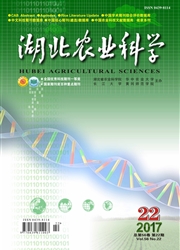

 中文摘要:
中文摘要:
凌汛遥感监测需要获取发生凌汛河段的整体信息,然而单幅遥感影像很难覆盖发生凌汛的所有河段,多幅遥感影像之间又存在着不同的尺度缩放和变形,其上的河道信息无法直接拼接使用.为了获得整条河流的凌汛信息,必须进行河道信息的自动提取和拼接.首先从理论上分析了不同尺度遥感图像上河道的特征,建立了不同尺度遥感影像上河道对应点之间的数学变换模型,然后利用遗传算法对变换参数进行优化求解,实现了不同尺度河道信息的最小化偏差拼接.从处理的结果看,该算法具有较强的稳定性,收敛速度较快.该算法还可以用于不同尺度遥感影像上其他地理特征的拼接与整合.
 英文摘要:
英文摘要:
It is a crucial step in ice flood monitoring to retrieve river channels from remote sensing images. However, it is often the case that one image cannot cover the whole flooded channels, and several images are usually of different scale and deformation. Consequently they cannot be put together directly to form the whole flood channel. In order to get information of the whole ice flood sections, river channels fusion must be used. Features of river channels in remote sensing images of different scale are analyzed in this paper at first, and then the transformation model of point coordinates in different images is established. Parameters in the mathematical model are solved using the genetic algorithm, and river channels in different images are fused together. The genetic algorithm is stable and converges fast according to the processing result. This algorithm also can be adapted to other features fusion in remote sensing images.
 同期刊论文项目
同期刊论文项目
 同项目期刊论文
同项目期刊论文
 GIS-based landslide hazard predicting system and its real-time test during a typhoon, Zhejiang Provi
GIS-based landslide hazard predicting system and its real-time test during a typhoon, Zhejiang Provi A comparison of land surface water mapping using the normalized difference water index from TM, ETM+
A comparison of land surface water mapping using the normalized difference water index from TM, ETM+ 期刊信息
期刊信息
